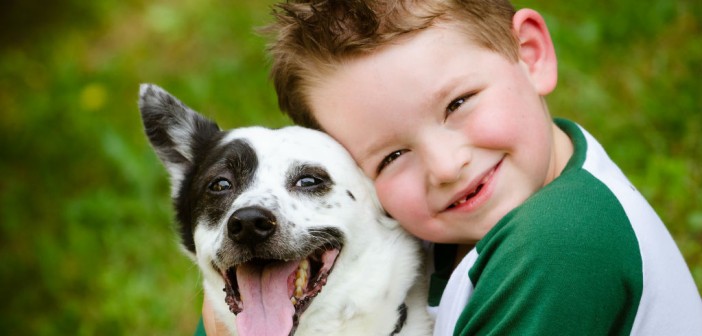From time immemorial, animals have always accompanied man. Initially, they served as housing guards and were sources of material goods. Today, their presence is able to reduce stress, improve health and even help children in the development of emotional and social skills. Let's deal with what is useful and what is the harmful pets for children? How do you need to instill a child's skills of safe animal behavior?
The main thing in the article
What kind of pet is better to start for children: the main factors
Choosing an animal, it is necessary to take into account his friendliness, sizes, habits, conditions of detention and a number of other important factors. We give several basic tips for families who want to make a pet:
- Fish. Their content requires a small space and minimum service level. Feeding is produced once a day, and the aquariums are cleaned once a week. The relative ease of fish content makes them perfect animals for families in which small children are raised.
- Rabbit - Smart creation with which you can play. This is a small animal, gentle, friendly and unpretentious in nutrition. It can be kept in the house and on the street.
- Homai, like rabbits, feel great in the company of younger children. An animal is quite active, playful and does not take up much space.
- Cat, though independent, but very sociable and loving animal. It quickly patches to the tray and is not demanding to food. And the pureliness and accuracy of the cat obliges the owners to carry out regular cleaning of a feline corner.
- Dogs require daily communication and long walks. In addition to this owners, four-legged friends, must take time for feeding, training and caring for wool. Dogs need permanent care and attention.
When buying an animal, take into account the temperament of the baby and his desire. Please note that dogs and cats initially do not see their owner in the child.
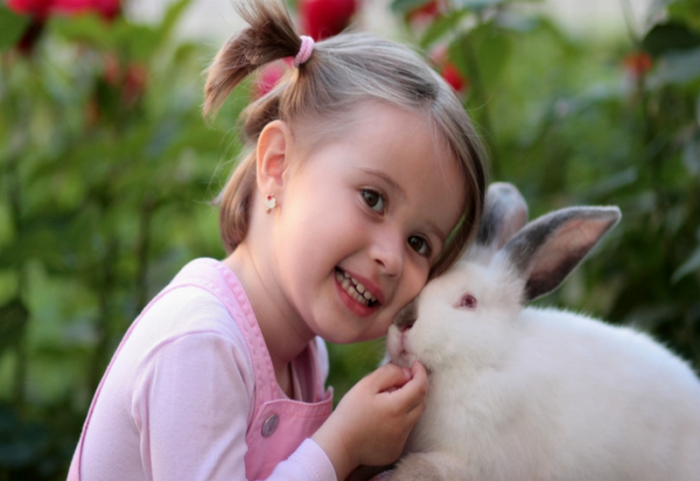
Pet keeping: basic expenses
Pet is a new family member who requires initial and current expenses. Its content includes a number of costs.
- Initial cost May be different, depending on the pedigree and the breed of an animal. Rate your financial capabilities and find the appropriate animal.
- Medical expensesSuch as vaccinations, operations and even inspections require additional investments.
- Feed. How many funds need to be postponed for feeding a pet depends on its size and breed. Remember that some animals have special dietary requirements, as in some people, so their maintenance will cost more.
- A haircut Most often associated with dogs, but cats also need some care. How often your pet will need grooming depends on the length of its wool.
- Object items, such as toys, trays for garbage, aquariums, cells, brates, sleep space, are simply necessary for the comfortable content of your pet.
Different animals have their habits and requirements. For example, the annual cost of ownership of the dog will be significantly higher than the annual content of fish.
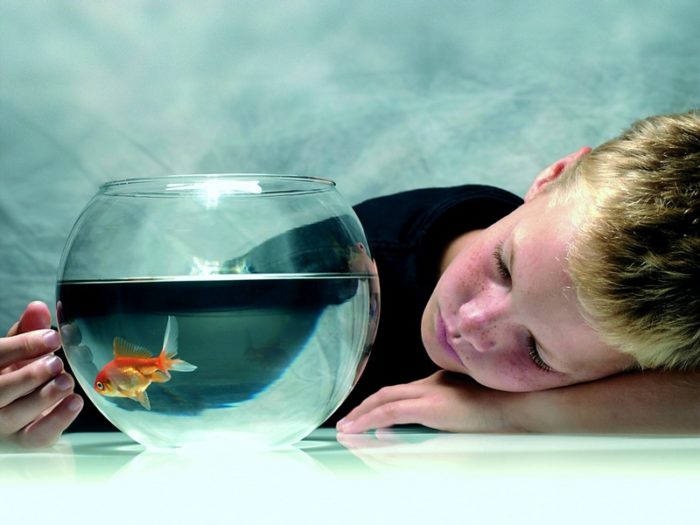
What benefits do pets bring for children?
A pet is needed by a child not only for entertainment, but also for communication, development and health promotion.
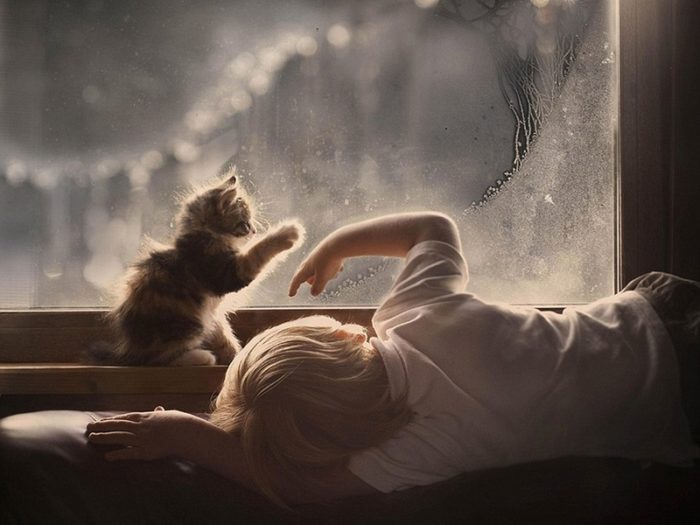
- Children growing with pets are less likely to have cold and other respiratory infections. Early contact with dogs and cats by 30% reduces the risk of developing cough, ear infections, runny nose and Chihana.
- With animal, the child is never lonely. The pet gives his love and is always near. A joint game increases the level of serotonin and dopamine, which soothes the mind and improve the mood.
- Children with domestic pets are more sensitive in relation to other animals.
- Having a dog in the house, the child grows more active and movable. In addition, pets help reduce stress, blood pressure and cholesterol in children and adults.
- Pets are read better. The wrong word or emphasis causes a laugh of peers that you can not say about animals. They never interrupt and listen carefully to all that they read. A child can constantly hone his reading skills and strengthen self-confidence.
- Children learn to be responsible. Caring for pets, guys feel responsible for the life of others. They learn to feed pets, clean the bowl, bathe and clean the toys.
- Dogs and cats help children with autism take stress and calm down. In addition, life with dogs, cats and other animals helps the autists acquire social skills.
- In children who are constantly communicating with pets, the cognitive development is improved and an understanding of anatomical concepts increases.
- The more pets are near the child at an early age, the smaller the likelrobidity of it will develop asthma, eczema and hay fever.
- Animals strengthen family ties. Such families communicate more with each other, share animals observations.
Choosing a pet for your child, be sure to explore the breed and consult with the breeder. Thus, you will get exactly that pet, which is most suitable for the lifestyle of your family.
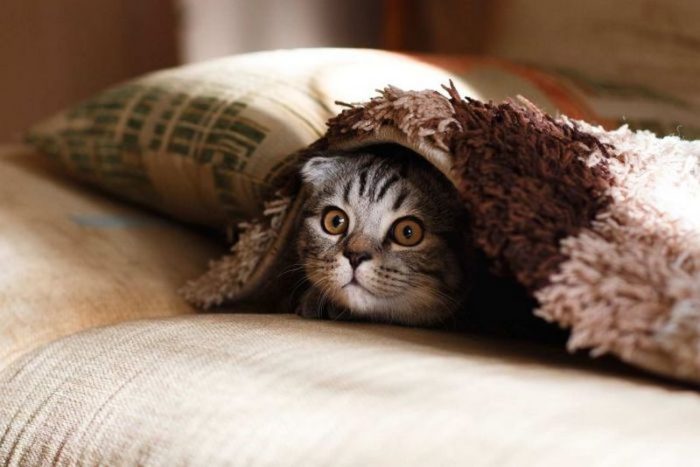
Domestic harm for children
Pets can pose a danger to the health and safety of the child. Regardless of how well the man knows his pet, he can sometimes get out of control. Therefore, adults need to look after children and animals during their communication. Even if the child is sleeping, he should not stay alone with a pet. In general, it is not worth allowing the animal to the baby's bedroom, and even more so let him use a bed for games, rest and sleep.
Pets can cause injuries and diseases in children and adults, including:
- getting bites and scratches,
- fall during the game with animals,
- shortness of breath caused by toys and animal feed
- allergies and asthma, provoked by animal wool, saliva, feathers and leather scales (dandruff),
- diseases and infections that are transmitted from animals to man, as a rule, through water, bedding and a bowl of food,
- difficult breathing and suffocation from nearly lying pet.
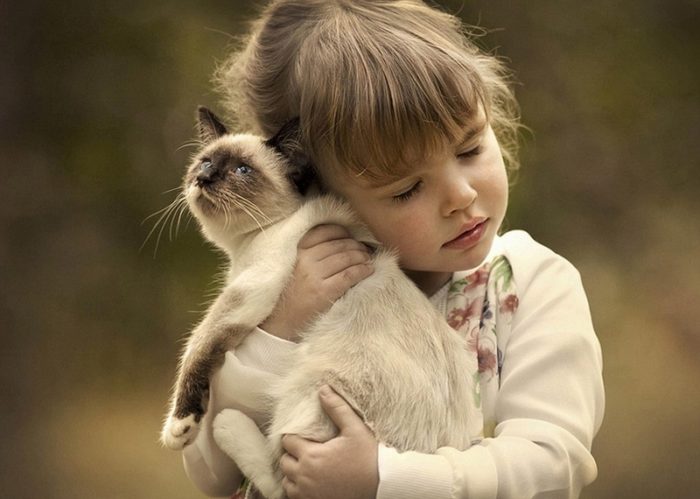
Animal bite and scratch
Any bite or scratch on the skin of the kid, received from the animal, should inspect the specialist, because the infection easily penetrates through the wound.
If the child is bruoked or scratched pets:
- rinse it immediately in warm tap water,
- remove wool, feathers and dirt from the wound,
- dry the wound and cover it with a pure bandage or plaster,
- go to a consultation to a specialist.
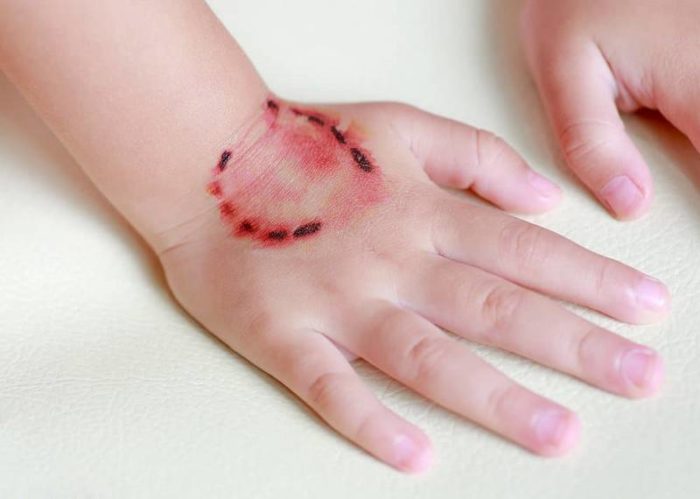
Infections and diseases transmitted from domestic animals
A pet can be a source of microbes and infections, which most often causes children and adults from the stomach and food poisoning. The painful state provoke microbes and bacteria, such as Salmonella, Campylobacteria, Giardia and Cryptosporidy. Most often people affect salmonelleswhich is transmitted through contact with infected animals and touch with mucous dirty hands. You can also get infected through food affected by bacteria.
Symptoms of salmonella include:
- diarrhea,
- stomach ache,
- temperature,
- nausea,
- vomiting
- headache.
If the child complains about one of the symptoms, talk to the attending physician and be sure to tell him about the presence of a pet.
To avoid infectious infection, keep animals clean and force children to wash after the game hand.
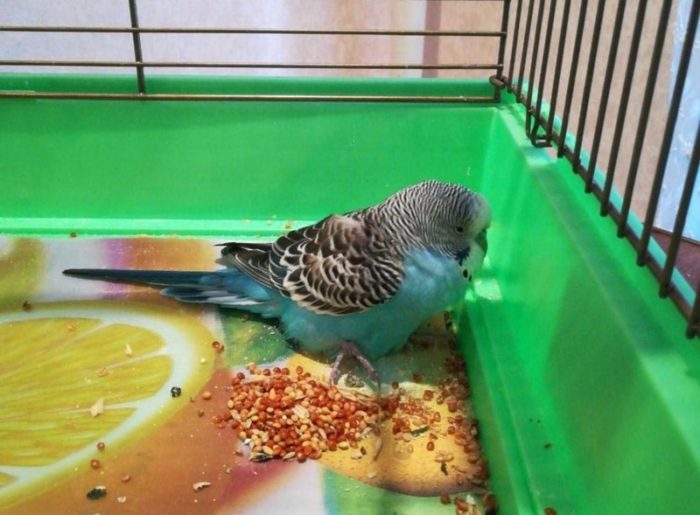
Allergy in children on domestic animals
Allergies in animals most often occurs when the content of cats and dogs. Moreover, it provokes not wool, but feces, saliva, leather and urine. There are cases that allergic reactions cause only other people's animals.
If you allergies cause your pet:
- keep the animal outside the house if possible
- do not let him sleep on a cot,
- after playing with animals, the child should change clothes and thoroughly wash his hands,
- animal must be bathed at least once a week,
- install the air filter in the children's room.
A pet should be regularly shown to the vet and be sure to fight fleas, ticks and parasites. Do not miss mandatory immunization. All home waste needs to be disposed of, and garbage boxes are stored in an inaccessible place for children. A healthy pet will save children from all kinds of infections and diseases.
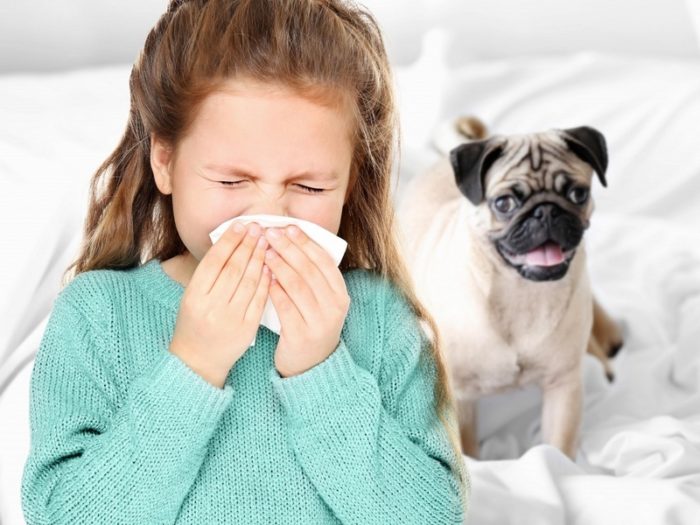
Pets and Newborn Child: Pet Reaction and Family Family Behavior
When the new creature appears in the house, the animal may exercise aggression and jealousy. In addition, the newborn smells in a special way and constantly screaming that they can scare them. The most loving, well-leading pet can turn into a predator.
Even before birth, it should be started to prepare an animal to joint living with a baby:
- It should be reduced in advance the amount of time spent with the pet. This will help smooth the sharp change in the number of attention he always received.
- If the animal is tied to the future mother, another family member must establish closer contact with it.
- You can diagnose a doll on your hands, talking to her and calling the name of the future baby.
- Record children's crying and periodically include it, so that the animal gets used to new sounds.
- If among friends there are families with babies, invite them to visit along with the child. At the same time, follow the petties and baby all the time.
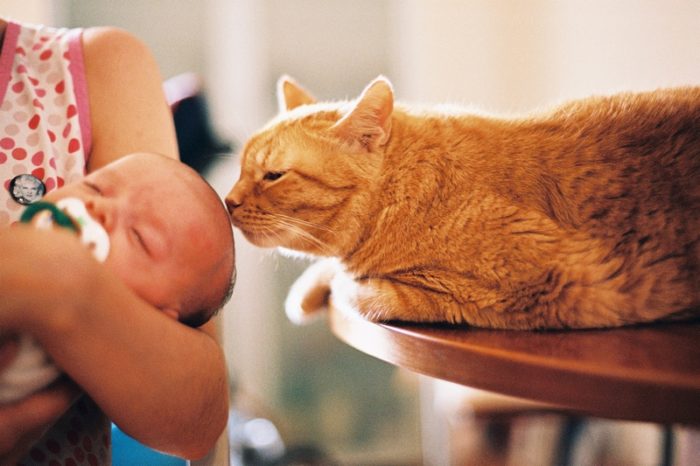
After the birth of a child:
- Before the animal meets the baby, you should bring it an item with a kindermeal, for example, a blanket.
- Develop positive associations with baby. To do this, put the animal next to the child and give him a treat.
- You should not leave a pet alone with a newborn.
- To reduce the risk of wool or dandruff into the kid's respiratory tract, the animal is placed outside the zone of his sleep.
Pets and small children: safety rules
Children can face animals anywhere, so they should be trained by their safety rules:
- You can not tease domestic animals and drive them into the angle.
- Do not disturb them when they eat or sleep.
- Wash your hands after touching pets and their items.
- Do not caress unknown dogs and cats.
- Do not allow reptiles, amphibians and rodents freely wander around the rooms. Do not allow the child under 5 years old to play with these animals.
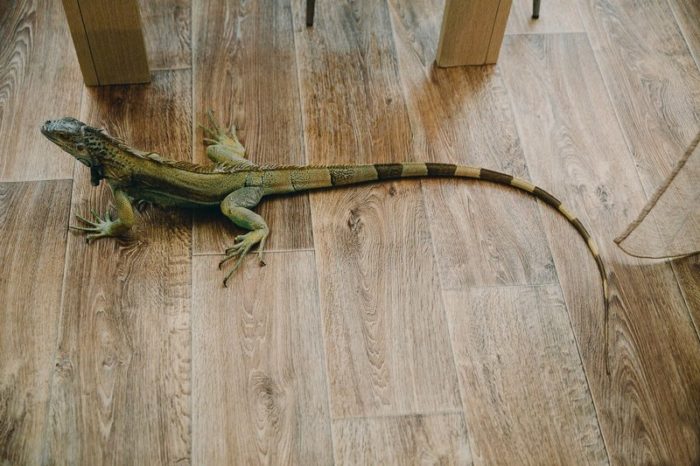
Parents must teach children how to react to the aggression of the animal.
- Never shout and not run away. It is better to stand, lowering hands on the sides.
- Avoid visual contact and slowly retreat when the animal loses interest.
- When attacking a dog, one object should be placed in front of you: coat, bike or ball.
- When falling to curl into the ball, close the ears and stay in place. Do not shout and not ride.
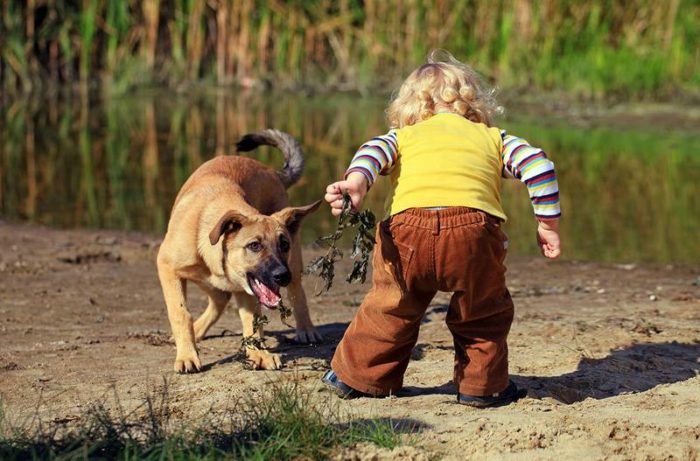
Will start and maintain a pet worth a lot of effort, but the advantages that children get from domestic pets are much more.
